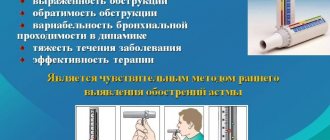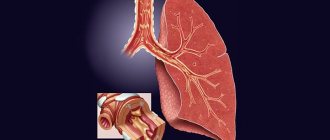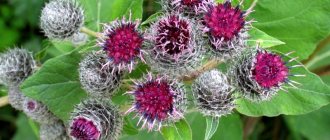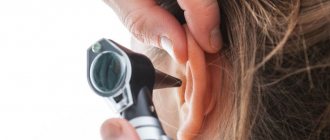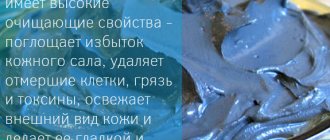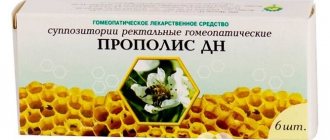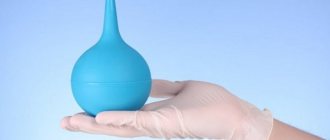When treating bronchitis, medications in the form of tablets are often used. But in order for the treatment to be more effective and the symptoms of the disease to be neutralized faster, additional methods of influence are prescribed. One of the most common is inhalation.
Inhalations for bronchitis are used to treat adults and children. Some parents note that this method is easier for them, since the procedure does not cause such a negative reaction in the child as taking pills.
In this case, medications through inhalation quickly reach the areas affected by inflammation. Their high concentration allows the substances to more actively resist pathological processes, due to which recovery proceeds faster.
- Types of inhalations
- Features of inhalation at home
Characteristics of the disease
Bronchitis (tracheobronchitis) is a disease that originates in the tracheobronchial tree. The cause of its occurrence may be fungal, viral, or bacterial. Physical and chemical causes can also trigger this disease. A severe form of the inflammatory process is characterized by the fact that inflammation affects not only the mucous membrane, but also the deep tissues of the bronchi.
There are two types of bronchitis: acute and chronic (may be simple or obstructive). They differ from each other in their origin, pathogenesis and therapy.
Symptoms of the disease appear as:
- acute rhinorrhea, laryngitis;
- dry or wet cough;
- weakness, broken state;
- difficulty breathing;
- body temperature is normal or up to +38 degrees Celsius;
- pain syndrome behind the sternum.
The main symptom of bronchitis is cough. The first day of the disease, it is characterized by dryness and severe attacks in the dark hours of the day, preventing the sick person from spending the night peacefully, provoking poor health. After a few days the cough becomes wet. As the disease progresses, its symptoms become more painful for the patient.
Coughing provokes severe pain in the chest area, radiating to the stomach. Respiratory function becomes difficult. Sputum becomes yellowish or greenish in color due to purulent discharge.
If the therapy is chosen correctly, the patient is cured within ten days. Sometimes a cough, as a residual manifestation of the disease, drags on for a much longer period of time than the disease itself lasts. This is due to the fact that the recovery period in the bronchi after inflammation is quite long.
Of particular concern is coughing that lasts longer than four weeks. In this situation, you will need the help of a pulmonologist who will identify third-party causes of cough. In addition, foreign impurities during expectoration (the presence of bloody clots in the sputum) should also be alarming.
This should be the reason for an immediate visit to a medical facility to take samples for tuberculosis or lung cancer.
Causes of bronchitis and why you need to know them?
Why is it necessary to know the causes and symptoms of bronchitis to treat them with essential oils?
1) Essential oils can relieve bronchitis, they can influence the symptoms and causes of this disease. You need to be able to select oils for their treatment.
2) The appearance of acute bronchitis is usually caused by either viruses or bacteria. Viral infections are more common.
3) Cigarette smoke (you don’t have to be a smoker for this; children – passive smokers) often suffer from it. Read about this in the article “Passive smoking may cause cancer”
4) Household chemicals (soap, shampoo, deodorants, detergents, air fresheners) can be the cause or trigger of this disease.
5) House dust and animal hair can also be triggers.
6) If a person easily develops bronchitis from cigarette smoke, household chemicals, or house dust, then it is necessary to exclude the presence of worms.
7) If you struggle with bronchitis for more than three months of the year, your lungs may be physically damaged, in which case essential oils will be useful mainly for treating the symptoms of the disease.
In this case, it is important to visit a doctor, since chronic bronchitis can lead to heart disease.
If you have chest pain or severe difficulty breathing, you also need to monitor the condition of your bronchi.
Benefits of the procedure for bronchitis
The main advantage of inhalation therapy is the penetration of the medicine deep into the respiratory system and its action directly at the site of inflammatory processes. Inhalation helps:
- eliminate swelling in the bronchi area;
- reduce the manifestations of inflammation;
- facilitate the discharge of sputum in a sick person.
Inhalation therapy is recommended for patients to make them feel better. This applies to respiratory function and breathing in general.
The next advantage of inhalation for bronchitis is its ability to perfectly moisturize the mucous membrane of the respiratory organs. The sessions provide an excellent therapeutic effect.
In a situation where a child suffers from bronchitis and the disease progresses very quickly, inhalation makes it possible to quickly respond and begin the fight against it in a timely manner. If you inhale the vapors of essential oils (garlic, eucalyptus, rosemary), you can really reduce the number of coughing attacks.
What are the beneficial properties of essential oils?
What is the reason for the nationwide success of these “miracle” liquids? It is not difficult to answer this question from a biological point of view: the benefits of essential oils are due to their phytoncidal properties. Phytoncides, or, as they are also called, natural antibiotics, are biologically active substances with strong bactericidal properties. It is thanks to them that essential oils have an antiseptic, anti-inflammatory and antipyretic effect, and also have a positive effect on the immune system and the condition of the body as a whole. Thus, the benefits of these liquids are not just another folk myth, but a fact confirmed by science.
There is no doubt about the benefits of essential oils, let's talk about the most effective methods of treatment. We will look at the 4 best approaches: inhalation, rubbing, internal use and healing baths.
Who are contraindicated for inhalation procedures?
Despite all the advantages of inhalation treatment, it also has some contraindications. Among them you can see the following:
- It is forbidden to resort to steam inhalation for bronchitis if the patient’s body temperature exceeds +37 degrees Celsius; treatment with a nebulizer can be carried out up to +38 degrees Celsius.
- The procedure is not prescribed for patients who have heart pathologies. It is also prohibited for arterial hypertension and lung problems.
- It is forbidden to carry out inhalation if the patient has a tendency to bleed from the nose.
Restrictions
Physiotherapeutic procedures carried out in a clinic office or at home have a number of contraindications, knowledge of which will help to avoid negative health consequences.
Bronchitis cannot be treated with inhalations if the patient:
- There is a tendency to allergic reactions.
- Fragile blood vessels or frequent nosebleeds.
- Problems with high blood pressure or heart disease.
- Severe lung diseases - emphysema, pneumonia, pulmonary hemorrhage.
- There is a history of a heart attack or stroke.
- Fever.
Contraindications also depend on the pharmacological group of the drug used. Limitations in the use of physiotherapeutic procedures in children under 2 years of age are associated with the inability to control the correct breathing technique, and it is important for pregnant women to pay attention to the composition of the solution. During an exacerbation of bronchitis, inhalations are permissible, provided that the body temperature does not exceed subfebrile values, and in case of bronchial asthma, the possibility of the inhalation method of administration is determined by the doctor.
Types of inhalation manipulations
Inhalations for bronchitis are possible using specialized devices - inhalers. Steam sessions are also acceptable, but their implementation requires special care to avoid burns on the mucous membrane of the nasopharynx. However, hot steam therapy is contraindicated in cases where there is an elevated body temperature.
It is permissible to perform the manipulation in the old fashioned way, which consists of breathing over the vapors of healing decoctions of medicinal herbs or boiled potatoes in their jackets.
Nebulizer
Inhalations for bronchitis with a nebulizer (like Omron) have gained wide popularity not very long ago. The instructions describing the use of this device are simple.
Don't miss useful information: How and with what to do inhalations with a nebulizer for a dry cough?
To carry out inhalation, the substance (mixture) should be poured into a special apparatus, in which a compressor will transform it into a spray-like substance, which the patient inhales using a special mask. This ensures that the healing spray enters the respiratory tract. The patient does not experience any discomfort or pain during the procedure.
A nebulizer, which produces a medium-fine aerosol, is most often used for bronchitis. It is characterized by deep penetration of medicinal vapors into the lower respiratory tract. We can use both a compressor and an ultrasonic inhaler for bronchitis. If we mention devices that produce coarse aerosol, they are more relevant for tracheitis, pharyngitis and runny nose.
For a couple
The technique of steam manipulation is accessible and easy to perform. To do this, you need to boil water. Then the active component is diluted with it. Having received the medicinal solution, you should cover your head with a blanket and begin to breathe in the healing vapors.
This is a budget procedure. Its downside is the fact that it is quite tedious. In addition, inhaling hot medicinal fumes often irritates the eyes. After the session, it is recommended to use a gauze bandage so that the healing air remains in the lungs and bronchi for a long time.
Inhalations using a nebulizer
A nebulizer is a device that helps a therapeutic agent penetrate deep into the bronchi and, therefore, enhances the therapeutic effect of inhalation. The device consists of a mask and a container for medications.
It is designed so that the medicine does not need to be heated to turn it into steam; ultrasound does this.
The device converts the substance into a suspension of fine particles, which facilitates their penetration into the lowermost sections of the bronchi. The devices are divided into stationary, installed in hospitals, and portable, at home.
A nebulizer for bronchitis helps relieve symptoms and speed up treatment.
There is another device for treating bronchitis - inhalers. They operate on the same principle as nebulizers: they inject substances into the respiratory system.
However, the difference here is that they do it in doses. In this case, inhalers cannot inject the medicine into the bronchioles. Although when treating the upper respiratory tract they do an excellent job.
General recommendations
Nebulizer inhalations for the treatment of bronchitis are undoubtedly more effective than procedures using hot steam. The bottom line is that only drugs from the pharmacy are allowed for use in it.
The nebulizer is not designed and may even become damaged when loaded with herbal infusions or essential oils. The use of this device does not pose the risk of accidental burns, because the spraying process is carried out under the influence of ultrasound.
The nebulizer is convenient for patients of all ages; even for infants there are attachments that make it possible to inhale while lying down. It creates a cool mist of medication that penetrates directly into the inflamed tissue.
The only drawback of the device is that if the nozzles are washed irregularly or poorly, there is a possibility that it itself will become a source of infection.
After each procedure, it is necessary to wash all dismountable parts of the device with soap, treat with an antiseptic and dry thoroughly.
Here are some other conditions that must be met when using a nebulizer:
- After eating or exercising, you must wait one hour before inhaling;
- Smoking is strictly prohibited for an hour before and an hour after the session;
- The session will be most effective when the nebulizer chamber is in a vertical position, if the person is sitting on a chair;
- You should refrain from talking during the procedure;
- the medicine must be kept refrigerated and can be used within two weeks from the date of opening the package;
- it is important to strictly adhere to the dosage of the medication and conduct sessions regularly;
- After the procedure, you need to be at rest for about an hour;
- The last procedure of the day must be carried out before six o'clock in the evening, otherwise increased sputum production will cause a cough, which will not allow you to sleep if the procedure is carried out later.
Separately, it is necessary to tell how to breathe correctly when treating bronchitis using a nebulizer:
- Measured deep breathing through the mouth with holding the breath before exhaling is used during therapy of the lower bronchi.
- Inhaling through the mouth, holding the breath and exhaling through the nose is recommended during treatment of the upper respiratory tract.
- Calm breathing without deep breaths is indicated in the treatment of inflammation of the nasal mucosa.
Preparations for inhalation with a nebulizer
For inhalation with a nebulizer to cure bronchitis, a large number of medications are used; they must be diluted with saline immediately before use:
- bronchodilator medications are indicated during barking cough and bronchial obstruction, with their help they relieve spasms;
- expectorants dilute mucus, improve its removal, help quickly remove the infection along with mucus, and are recommended for wet coughs;
- anti-inflammatory medications and antiseptics are prescribed for bronchial pathologies caused by infections of bacterial origin, they reduce the intensity of inflammation;
- vasoconstrictor medications fight swelling of the mucous membranes, restore normal blood flow;
- hormonal drugs relieve allergic manifestations and stop inflammatory processes;
- immunomodulatory agents activate the local immune response;
- Antibiotics are prescribed for bronchitis with purulent discharge.
You need to know that all drug solutions are made before the nebulizer inhalation procedure itself, and the interval between sessions must be at least six hours.
You can also use alkaline mixtures to hydrate the respiratory system to avoid the risk of pneumonia or other complications:
- soda solutions;
- slightly alkaline mineral waters, previously freed from gas. They moisturize the mucous membranes of the respiratory tract from the oropharynx to the smallest bronchi, and at the same time help to minimize catarrhal manifestations and facilitate breathing;
- saline solution in combination with soda.
The duration of the session and the dosage of the medicinal drug are determined by the doctor, based on the patient’s age and symptoms of the disease. Typically, the duration of an inhalation session with a nebulizer for adults and children over 10 years of age is no more than 5 minutes, for children under 10 years of age – up to 3 minutes.
If the doctor has prescribed drugs to dilute sputum and bronchodilators, then first use a drug to dilate the bronchi. After 15 minutes, you can inhale an expectorant.
Rules
In order for inhalation manipulations to give the desired effect, it is recommended to adhere to the following rules:
- The session is carried out when 90 minutes have passed after the person has eaten.
- After the session, it is advisable to remain silent for 60 minutes, not eat, and not leave the premises. After the last session (carried out at night), you should immediately go to bed and fall asleep.
- During the procedure, those suffering from bronchitis take a deep breath through their mouth, trying to maintain a calm and measured breathing rhythm. The manipulation uses a special mouthpiece (attachment).
- It is necessary to prepare the medicinal composition for inhalation in the manner prescribed by the doctor.
- The prepared medicinal solution should be stored in a refrigerator for no more than 24 hours.
- An inhalation session with a nebulizer at elevated body temperatures is allowed if approved by the attending physician.
- Adults are supposed to breathe the steam from seven to fifteen minutes, children - from five to seven minutes.
- The session is held twice a day.
- It is worth preparing the solution immediately before undergoing the manipulation.
- If there are residual medications in the nebulizer container after the procedure, they should be drained.
- You are not allowed to smoke after the session.
- After the procedure, it is recommended to rinse your mouth and wash your face.
Precautionary Information
Performing manipulation using the steam technique, in contrast to inhalation using a nebulizer, requires special precautions to be taken. It is prohibited to inhale vapors at water temperatures exceeding +57 degrees Celsius. This may result in burns. For inhalation procedures, it is not advisable for children to use liquids hotter than +30 degrees.
It is forbidden to bend too low over the container with the medicine during steam manipulation. This can cause burns to the nasopharynx.
When conducting a session in the bathroom, you should make sure that the container with the solution is on a flat surface. This will eliminate the risk of injury due to the saucepan with the solution tipping over.
The main precaution for nebulizer treatment is to strictly follow the doctor’s instructions and adhere to the dosage during the preparation of the solution, as well as the instructions for use of the device.
Medications
Medications for inhalation for bronchitis cannot be chosen at your own discretion. They are prescribed by the attending physician. It is worth saying that inhalation drugs for children with bronchitis are similar to those used to treat adult patients, but their doses differ significantly.
Medicine for inhalation for bronchitis, prescribed by a specialist, is usually taken from the following list:
- Bronchodilators (medicines that affect dilation) like Berodual. This medication is effective. It has a small number of contraindications with side effects. It relieves asthma attacks well when used as inhalation for obstructive bronchitis.
- Mucolytics or secretolytic substances. These are medications that help thin mucus and help remove them from the body (Ambrobene, Ambroxol). However, Ambroxol cannot be used in vapor form in conjunction with antitussive drugs.
- Anti-inflammatory drugs. This group includes medications such as Rotocan, Propolis, Chlorophyllipt (in the form of an oil or alcohol solution), Calendula.
- Hormonal medications. Used against inflammatory processes and allergic manifestations. This type of drugs includes Dexamethasone, Cromohexal, Prednisolone.
- Antiseptics and antibiotics. These are Furacilin, Dioxidin, Fluimucil, Miramistin, Amoxicillin.
- Immunomodulatory drugs like Derinat.
- Medicines characterized by a vasoconstrictor effect. These are drugs that prevent swelling of the mucous membrane of the respiratory organs.
- Medicines that reduce the number of cough attacks such as Lidocaine, Tussamag.
It would also be a good idea to inhale with a solution of soda or sea salt, or a slightly alkaline mineral water like Borjomi.
It is recommended to breathe in the fumes of essential oils only when their use does not provoke allergic manifestations (pine, eucalyptus, cedar oil, fir oil, thuja, lavender). The inhalation solution is made in accordance with the proportion: 5 drops of aromatic oil per 250 milliliters of liquid.
Don't miss useful information: How to cure COPD in adults forever: inhalations and medications
Lazolvan
This medication helps to liquefy mucus and remove it from the bronchi. For chronic obstructive bronchitis at the acute stage, adults are initially prescribed 4 milliliters twice a day, then 2 milliliters three times a day in pure form or diluted with saline in a 1:1 ratio.
Pulmicort
This is a hormonal drug. Its dosage and duration of therapy are prescribed only by a specialist. Pulmicort is used exclusively in nebulizer therapy, no more than three times a day. The average dose per session is 0.25 milligrams.
Atrovent
Atrovent with an active substance called ipratropium bromide is available in dosage form as an inhalation solution and an aerosol. It is used for chronic pulmonary obstruction, emphysema of pulmonary tissue, asthmatic attacks, chronic obstructive bronchitis and pneumonia.
It can be taken in the form of inhalations to patients who have a history of problems with the heart and blood vessels.
The nebulizer should be filled with this drug by first diluting it in 4 milliliters of saline solution. The dose of Atrovent per inhalation procedure is approximately 2 milliliters.
Derinat
This medication has a powerful immunomodulatory and immunostimulating effect. It stimulates the cells of the immune system, accelerating the healing process, activates tissue regeneration, and has anti-inflammatory and antioxidant properties.
It is not recommended to pour pure medication into a container for inhalation for bronchitis. Derinat is diluted in physiological solution in a certain ratio. To combat bronchitis, as well as bronchial asthma and tuberculosis, a 1:1 proportion is required when using a drug solution with a concentration of 0.25 percent.
Furacilin
This antimicrobial agent based on nitrofural is used in inhalation for acute and chronic forms of bronchitis. For the procedures, take a pharmaceutical solution of Furacilin with a concentration of 0.02%.
Such therapy tends to help relieve swelling, eliminate inflammation in the mucous membrane, eliminate pathogenic microflora, and prevent the growth of infection in the bronchiole area.
Mechanism of action of inhalations
Steam inhalations deliver the drug to the site of inflammation when the patient inhales steam from hot water, to which essential oils, decoctions of medicinal herbs, and medications are added.
Such inhalations at home for bronchitis do not require any special equipment; they are very effective. The first signs of relief occur after several procedures.
To enhance the effect of using a medicinal substance, a nebulizer is used to deliver it to the bronchi - a medical device that works on the principle of aerosols.
The advantages of inhalations in the treatment of bronchial pathologies are due to the fact that the medicine supplied with their help acts in several directions at once:
- thins mucus in the respiratory tract;
- moisturizes the surface of the mucous membrane;
- promotes expectoration and thus removal of phlegm;
- reduces inflammatory processes;
- expands the bronchial lumen;
- relieves coughing attacks;
- restores damaged tissue, increasing blood flow to the mucous membranes.
Inhalations are a simple, effective method to quickly relieve the patient’s condition. In this case, the procedure practically does not cause adverse reactions, except for a possible allergy to any component of the medicine or hot concentrated steam.
During the session, the therapeutic effect intensifies, because the medicine in sprayed vapor fractions penetrates through the mucous membranes as quickly as possible.
Folk recipe
Folk remedies for inhalation for bronchitis include medicinal plants and medicinal herbs. Herbalists recommend treating the patient with chamomile, St. John's wort inflorescences, sage, raspberry leaves, oregano, and juniper.
A decoction is prepared from the medicinal plant, which must be infused for half an hour. Then boiling water is added to the resulting liquid according to the recipe and the sick person begins to breathe healing fumes for about 30 minutes.
With herbal preparations, the performance of inhalation manipulation does not change. In folk medicine there are effective preparations that are applicable for difficulties in sputum discharge. For example: elderberry inflorescences (15 grams) + mullein inflorescences, or thermopsis grass (1 grams) + primrose leaves (20 grams). These herbs are boiled, infused and diluted with boiling water.
Onion inhalation
The onion must be chopped and poured with hot liquid. The prepared solution is used for onion steam inhalation. Garlic manipulation is carried out in a similar way.
Validol
One Validol tablet is kneaded and 7 drops of iodine are added. A soda solution is made using half a tablespoon of soda and two cups of boiling water. All components are poured into the liquid and mixed thoroughly. Pour the hot contents into a teapot or inhaler. You need to breathe in vapor through the spout of the teapot for 10 minutes in the evening. After three days, even the persistent cough goes away.
Features of pine inhalation
Inhalation using fir oil at home is usually done for coughs and chronic bronchitis. This procedure has a pronounced antiseptic, antimicrobial, decongestant and restorative effect. It is carried out by steam. To do this, dissolve five drops of oil in a container with liquid.
This manipulation should not be performed on children, as well as patients with cough of allergic etiology.
Steam inhalations
The simplest type of such procedure without the use of technical means is steam inhalation for bronchitis. They are familiar to everyone since childhood. Hot steam stimulates mucus discharge and increases blood circulation.
At home, steam procedures are carried out by breathing over hot water, from which steam comes, and covering yourself with some kind of cloth to retain heat. Sometimes a funnel-shaped nozzle is used to deliver heated air directly into the oral cavity.
The optimal temperature of liquid for inhalation for bronchitis at home is approximately 60-65 degrees for adults, for children – 45 degrees.
Rules
For bronchitis, steam inhalation can be done only if the patient does not have a high temperature. An exception is made if the patient is suffocating due to obstructive bronchitis.
In this case, he must urgently breathe in bronchodilators to relieve the attack.
In addition, a number of other rules must be observed:
- in order to avoid burns to the respiratory organs, it is strictly forbidden to inhale over just boiled water;
- Medicines should be used only after consultation with a doctor;
- the break between food and the procedure should be an hour or an hour and a half;
- Inhalations carried out immediately after physical work in an excited state are also fraught with negative consequences. Therefore, you need to calm down and wait one hour before starting the session;
- at the end of the procedure, you need to remain silent for half an hour, not be exposed to cold air, and it is advisable not to open your mouth at all;
- The procedure cannot be performed in hot or cold weather; the patient requires a comfortable temperature, and drafts should be avoided.
Steam inhalation products
At home, a variety of medicinal herbs and essential oils are used for inhalation against bronchitis:
- Herbal mixture: chamomile flowers, sage, pine buds, mint, viburnum, Kalanchoe, elderberry, eucalyptus are poured with boiling water and allowed to brew. After this, the liquid is filtered and poured into a container for the procedure. During the day you need to breathe over this decoction three times, and each time you need to pour in a new one.
- Salt solution for inhalation: three tablespoons of sea salt are diluted in one liter of water, mixed with a teaspoon of soda and five drops of eucalyptus oil.
- Essential oils for bronchitis: spruce, pine, lemon, thuja - five drops per 250 ml of water. They should be used with caution, since if the respiratory system is excessively sensitive, people prone to allergic reactions may develop swelling and spasm.
- Garlic-onion juice: one teaspoon per 250 ml of water. A huge amount of phytoncides contained in garlic and onions acts as a natural antiseptic.
- Honey: a tablespoon of honey, preferably linden, is mixed with 200 ml of saline, then heated to 80 degrees and the steam is inhaled.
People with allergies should be careful when using such inhalations.
Features of the event for different categories of people
The implementation of inhalation for bronchitis for different groups of patients has its own characteristics.
Children
If mom and dad have diagnosed bronchitis in their child, they should know how to help him. Otherwise, there is a risk of developing such a serious illness as pneumonia.
Before you start inhalation, you should definitely visit a doctor. If the cause of severe coughing is an allergy, and adults themselves have determined the diagnosis, then inhalation sessions can worsen the well-being of the little patient. This can cause swelling in the bronchi and obstruction.
For this reason, when you notice the first symptoms inherent in bronchitis, you should immediately seek help from a pediatrician. He will make the correct diagnosis and prescribe an adequate inhalation agent.
Young patients should be treated with caution. Previously, inhalation sessions were carried out exclusively in a hospital setting. Today it is possible to carry out this manipulation at home. But at the same time it must be prescribed by a pediatrician. Such therapy is unacceptable if the baby is suffering from a wet cough.
Don't miss useful information: How and what to use for inhalation for sinusitis in adults and children?
The younger the child, the less time the inhalation procedure should be performed (from 3 to 5 minutes). No more than three sessions can be performed per day. It is permissible to carry out inhalation for children only with the help of a nebulizer; steam inhalation measures are extremely undesirable.
Experts do not approve nebulizer therapy for infants and toddlers under two years of age.
The infant will not inform the mother about changes in his own well-being during the procedure, and accordingly adults will not be able to stop the session in a timely manner if the need arises.
During the period of gestation
Pregnancy is characterized by a sharp decrease in immunity. During this delicate period, the expectant mother is especially susceptible to colds that affect the respiratory tract. Inhalation measures are recommended by doctors for women during pregnancy as a gentle treatment.
Herbal tinctures (chamomile, sage-based, linden blossom, string, etc.) will help ease your well-being when suffering from bronchitis. You can also use essential oils if you are not allergic to them. Treatments based on soda and salt will be useful; you can also use non-carbonated mineral water.
Steam manipulation during this period is a contraindication. Nebulizer inhalation is permitted after consultation with the attending physician.
Can essential oils be taken internally?
Alternative ways to use essential oils
Essential oils are a whole complex of vitamins and are good for maintaining immunity, but they can only be taken orally in small quantities and before meals. Here are some good options:
- Drinking one spoon of sea buckthorn oil once a day before meals will help fight inflammation.
- Special tea with fennel and honey will be effective as a softening agent (1-2 teaspoons of honey and a few drops of oil per mug of water). You can also find many other options for tasty, fragrant, and most importantly healthy teas. Possible components will be essential oils, herbal preparations, honey and citrus fruits.
Please note that this method is contraindicated for people with acute diseases of the gastrointestinal tract.
Inhalation for various types of bronchitis
Inhalation effects for different types of bronchitis are basically carried out in the same way; there are only minor features determined by the severity of the disease and its type.
In acute form
With a complicated course of the disease against the background of inflammation, the development of a condition such as acute bronchial obstruction (spasm of the bronchi) is observed. The pathology is accompanied by shortness of breath. In addition to this, the patient is worried about severe coughing with the release of mucous masses of light shades.
In this case, the doctor prescribes medications that help expand the bronchi. Thanks to them, the sick person can breathe easier. These are mainly bronchodilators - medications that can also be used for nebulizer inhalation.
The acute form of bronchitis is accompanied by a dry cough. He is recommended wet and hot inhalation with saline, using mineral water or soda solution.
When the cough enters the wet stage, the patient is advised to carry out inhalation sessions with medications that remove mucous masses with sputum from the bronchi area. We are talking about mucolytics, expectorants with bronchodilators.
If several medications are prescribed at the same time, it is necessary to follow the order of their use. First of all, bronchodilators are used, after a quarter of an hour, medications that dilute and remove mucus. After the sputum is discharged, you can take antibiotic drugs with anti-inflammatory drugs.
In obstructive form
Obstructive bronchitis is a diffuse inflammatory process in the bronchi. It is characterized by the occurrence of cough with sputum, expiratory shortness of breath, wheezing inhalation and exhalation, and respiratory dysfunction.
Inhalation steam sessions are not suitable for the treatment of this type of disease. The use of herbal and oil preparations is also prohibited. The safest nebulizer solution in this situation may be Narzan or Borjomi mineral water.
Among medications for inhalation, Berodual and Atrovent are often prescribed for cases of such bronchitis. Plain or mineral water should not be used as a medication solvent, as this can lead to bronchospasm.
In the chronic course of the disease
The chronic type of bronchitis, including its atrophic variety, occupies a leading position in the structure of nonspecific lung diseases. Bronchitis is called chronic if the cough lasts for at least three months per year over a two-year period in a row.
The chronic form of the disease appears against the background of prolonged irritation of the bronchi (in smokers, people who have constant contact with dust and smoke). This entails changes in the mucous membrane and favors the penetration of various infections (viruses, bacteria and fungi).
Injured mucous membranes produce more mucus and are less able to remove them from the body. Initially, this may provoke a cough in the morning. Over time, coughing may become nocturnal and occur during the day. It will intensify in cold weather. Within a few years the cough will become constant.
Both steam manipulation and procedures using a nebulizer with the addition of bronchodilators, expectorants, antiseptics and anti-inflammatory drugs prescribed by the doctor will help cure the chronic form of the disease.
Benefits of procedures
Depending on the choice, essential oils may have the following properties:
- Expectorant. Under the influence of essential oil vapors, phlegm discharge may be facilitated. The mucus is liquefied, then the muscles are stimulated as a result of irritation of the nerve endings. The airways are quickly cleared.
- Anti-inflammatory. Some oils suppress unwanted immune reactions and soothe irritated tissue. After inhalation, the lumen expands, breathing becomes easier, and patients are less likely to cough.
- Antibacterial and antiviral. Essential oils can destroy pathogens and reduce their concentration. The drugs are not effective enough, so they should not be used as the main drug, but they can reduce the risk of complications in infectious and viral forms of bronchitis.
- Painkiller. When inflammation of the mucous membranes is relieved, the discomfort associated with the local immune reaction disappears.
- Calming. Essential oils moderately improve mood and help avoid stress due to illness. This promotes muscle relaxation. Essential oils with sedative properties allow you to fall asleep faster and provide good rest.
- Immunomodulatory. Due to stimulation of nerve endings and blood flow, a local increase in temperature occurs. Nutrients are supplied with the liquid, which helps strengthen the immune system.
- Warming up. When the mucous membranes are irritated, blood flow occurs. This promotes healing of the walls and increases their elasticity. A moderate warming effect makes breathing easier and prevents exacerbations.
- Decongestant. When inflammation is relieved, fluid drains away from damaged tissues. They decrease in size. As a result, the lumen expands, making it easier for the patient to breathe.
To enhance the effect, essential oils can be combined, but you must consult a specialist in advance.
To enhance the effect, essential oils can be combined, but you must consult a specialist in advance. If the components are not chosen correctly, the patient's condition may worsen.

